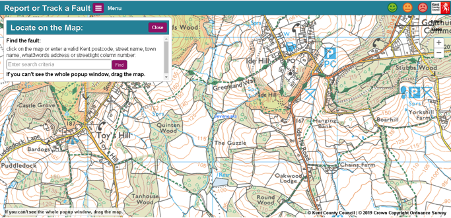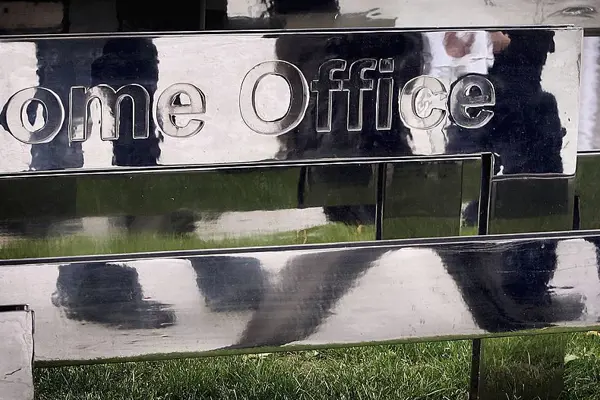
Being a good cycling neighbour
Rory McCarron has put together a guide about road defects and how to be a good cycling neighbour .
Posted on 05 March 2021
I cannot think of many cycle rides where I haven’t encountered at least one defect in the road where I’ve needed to take evasive action. Whether it’s a sunken drain cover, pothole, dip or raised surface. According to Cycling UK, there’s an average of one road defect for every 110 metres of road. So how does the system of repairing our roads work and is it getting worse?
The fact is that our roads aren’t perfect and there is a general acceptance (rightly or wrongly) that this is just how it is in the UK because we lack the funding and resources to be able to properly maintain them and keep fixing the holes that appear. Most would agree that it would be impossible for each council to inspect every road within their borough or county every day to make sure they are free from defects.
The basic principle applied by Councils up and down the country is that the busier the road is, the more likely there will be a regular inspection. Commonly, the most frequent roads in the UK are inspected at least once a month. The less busy roads can be inspected once every three months and even annually.
Given that defects can appear in the road quite quickly, especially in the winter months, highway authorities rely on members of public to help them identify defects that may be considered dangerous to road users.
This can be helpful where the road is subject to a less frequent inspection regime and it may be months before an inspector returns to the road to inspect it.
However, there appears to be a lack of consistency between regions and even between individual inspectors as to whether a defect in a road should be repaired or not.
Councils argue that not every defect in the road is considered ‘Dangerous’ to road users and therefore doesn’t warrant repair. National guidance put together by the Road Liaison Group outlines that a risk-based approach needs to be adopted, and inspectors are encouraged to use their discretion as to whether a defect is dangerous to road users or not.
Contrary to that, most highway authorities set a minimum intervention level for the depth of defects to be repaired, normally at 40mm deep.
You don’t have to be a regular cyclist to be able to imagine what could happen if your cycle wheel hits a 30-39mm deep pothole– the consequences can be extremely serious.
It is clear that this arbitrary depth rule is more dangerous to cyclists than it is to four-wheeled vehicles on the road. So, what can we as cyclists do about helping each other on the road?
If you see a defect in the road that you consider dangerous, stop, and if you feel it is safe to do so, take a picture of it with your water bottle, pump or any reference point in it at the deepest point. It is essential to report dangerous defects especially if it is towards the left of the road, on a fast section or hidden. This simple act could save a fellow cyclist from catastrophic life-changing injuries or worse.
Councils will use a lack of reporting as a defence in a legal claim against it. If they have no reports of a defect in-between an inspection period and an incident, that is often their ‘get out clause’. They will often say the defect must have occurred within that period of time between inspections, and they couldn’t have reasonably known about and they have a statutory defence.
This defence is not so easy if members of public have put them on notice about it.
There are a number of places you can report defects. If you know the county or borough you are in, then simply go onto the local authority website and there should be a reporting system available.
I use Kent County Council’s website as an example only as I tend to ride in Kent regularly:

Normally on most county council websites, the map they use will also show existing reports by other members of public too and their status.
If this is the case, I would still encourage you to report the defect again, because the more the public report the said defect, the more dangerous it would be perceived by road users including cyclists.
If you are not sure of the county or local authority you are in, you can simply go onto the government website and use the search box with a postcode and they will locate the appropriate Highway Authority for you.
This can be useful in Cities such as London that is divided up into Local Boroughs where it could be difficult to identify the specific authority.
In addition to local authorities there are a number of useful websites that are somewhat easier and more user friendly to navigate such as FixMyStreet and Report that hole (by Cycling UK).
FixMyStreet
Fix my street normally filters through to local authorities once you’ve reported something. The good thing about this website is that you can check the status of your report and what action has, or will be, taken. You can also see historical repots throughout the years to see if the issue is reoccurring.
Fill that Hole
Section 56 Notice
Finally, if you have reported a pothole or defect in the road that is the responsibility of your local authority and nothing has been done about it - sometimes a road that you pass quite often, maybe your own road - you can raise a Section 56 Highway Authority 1980 Notice. Its more complicated than just reporting but something members of public can do. The Ramblers website gives a nice understanding of how it works.
Conclusion
Whilst it costs millions of pounds to maintain our roads in the UK, more and more people using public roads are bringing claims for damage and injury caused as a result of disrepair.
Slowly Highway Authorities are adapting their measures when considering the impact that the condition of the roads can have on ALL road users.
Devon County have recently trialled using the mobile App Strava to identify popular roads used by cyclists to give these routes more priority and consideration for repair.
In addition, the National Cycle Route stretches upon 1000s of miles of public Highway in the UK and some Authorities now recognise the need to give this extra attention, especially as lots of cyclists use quieter roads free from vehicles, which are inspected less frequently.
With the momentum put in place by the Government during Covid-19 for people to consider alternative modes of transport such as cycling and walking, this also needs to be considered by Highway Authorities.
The Highway Code specifically related to vehicles, cyclists and pedestrians and all three are recognises as “Road Users” of the Highway, therefore Highway Authorities need to pay serious attention to this too, when considering the condition of our rides and whether they are fit for all road users.



